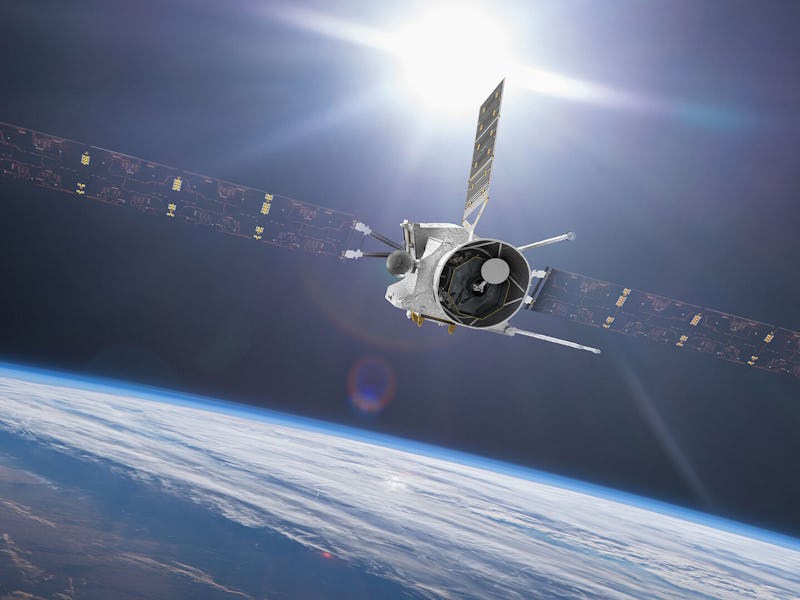How to watch satellite BepiColombo on its way to Mercury: Time, location, and gear
On Thursday April 9, BepiColombo will make a brief appearance in our skies. Here's how to watch it from your backyard.

On Thursday April 9, Earth will be greeted by a longtime friend in the skies.
The European Space Agency’s (ESA) spacecraft BepiColombo will do its first and only flyby of our planet on the night of April 9. The near-Earth buzz marks a final wave goodbye as it heads towards its final destination, Mercury.
And you can right wave back. All you need is to be in the right place at the right time. Here's what you need to know to spot the spacecraft from your own backyard.
On Thursday, BepiColombo will come within just a few thousand kilometers of Earth’s atmosphere, flying at an altitude of 12,700 kilometers.
It will be closest to Earth at 12:24 a.m. Eastern on April 10. At that point, it will be visible to us Earthlings through a small telescope or even a set of binoculars.
“The flyby has an emotional effect,” Johannes Benkhoff, BepiColombo Project Scientist at ESA, said in a statement.
“It’s the last time that we can see the spacecraft from Earth, so we are inviting amateur and professional astronomers to observe it before it goes."
How to see BepiColombo:
During the night of April 9 through the early hours of April 10, the spacecraft will be visible to astronomers, both amateur and professional, in different parts of the world.
If you are in the Southern Hemisphere, or in southern parts of the Northern Hemisphere, then you have the best chance of watching the spacecraft as it flies by our planet.
All you will need is a pair of binoculars, a camera, or a small telescope.
This chart shows where and when the spacecraft is most visible across the globe:
Therefore, residents of southern Europe, and southern states of the US like Florida or Texas will have optimal viewing grounds. In Asia, people living in Japan will also catch a glimpse of BepiColombo on April 10 as it moves further away from Earth.
The graph shows the visibility of BepiColombo from different parts of the world.
“If something appears as a moving star in the field of view of your telescope or camera, that will be Bepi,” Joe Zender, ESA BepiColombo deputy project scientist, said in a statement.
A team of BepiColombo scientists from the National Institute for Astrophysics in Italy have put together a helpful tool to help you plot the spacecraft's motion across the sky based on your location.
You can access the tool here.
BepiColombo's 'fly-bye' — BepiColombo launched in October 2018 to explore the Solar System's innermost planet, Mercury.
BepiColombo is designed to transform our knowledge of Mercury by studying the planet's surface in order to identify its composition and geological history, as well as measure its magnetic conditions.
Although Mercury is the smallest and least explored planet in our Solar System, scientists are eager to learn more about its strangely large core, and unusual magnetic field (Mars and Venus don't have one).
BepiColombo is set for a year mission to Mercury, with the possibility of extending it for another year.
It is expected to reach Mercury by the year 2025.
Track BepiColombo's journey to Mercury.
Although it has spent just two years in space, by the time BepiColombo waves hello, and goodbye, to Earth, it will have already traveled 1.4 billion km in space, orbiting around the Sun. That is around 9 times the distance between the Earth and the Sun.
The Earth flyby lets ESA’s ground control team do one final check of the spacecraft’s instruments and sensors before sending it on its way.
As it passes Earth, BepiColombo will pump the brakes, slowing from 30.4 to 25 kilometers a second. The slow down is deliberate. It will put it on the right path to fall into orbit around Mercury.
BepiColombo uses planets like Earth and Venus to act as gravity assists and help propel it in the right direction.
BepiColombo makes its first flyby Venus in October 2020. It will pass the planet once more, in the year 2021. After that, it will do six flybys of its new host, Mercury, before settling in to a stable orbit around the planet.
Once it is in place, the spacecraft will release two, smaller craft, the Mercury Planetary Orbiter and the Mercury Magnetospheric Orbiter. Together, these craft will begin a series of scientific operations in early 2026.
If you do manage to catch BepiColombo on its historic voyage, the ESA encourages you to upload your image of BepiColombo to Twitter or Instagram with the hashtag #BepiColomboEarthFlyby for a chance to win a scale model of the spacecraft. You may also have your picture published on the space agency's website.
Upload your picture using this form. Happy viewing!